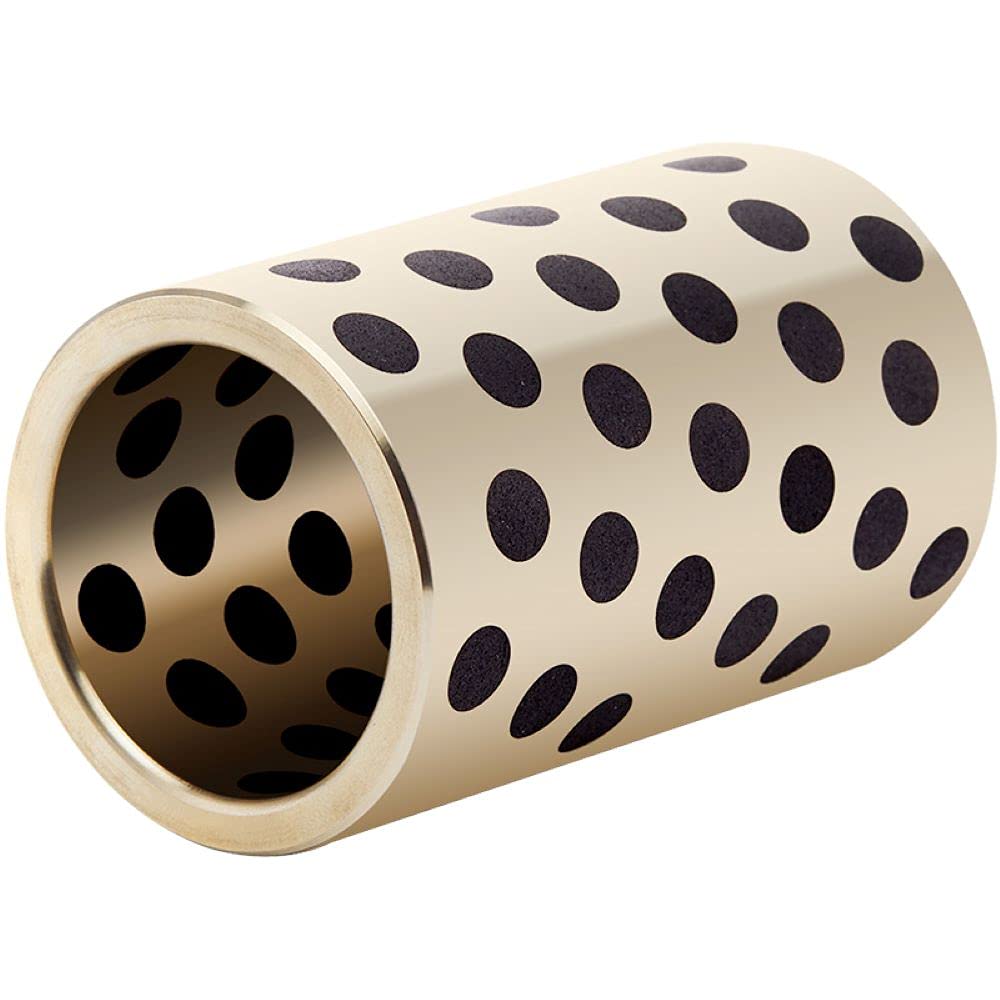A bushing, also known as a plain bearing, is a type of bearing designed to reduce friction between two sliding surfaces. Here are the key points:
Definition:
● Bushing (Plain Bearing): A bushing is a cylindrical lining designed to reduce friction and wear inside a hole, often used to constrain, guide, or reduce friction in rotary or linear applications.

Materials:
● Brass:
An alloy primarily composed of copper (Cu) and zinc (Zn). The proportion of these two metals can vary.
Basic Composition:
Copper (Cu): Typically ranges from 60% to 85%
Zinc (Zn): Typically ranges from 15% to 40%
Known for its good machinability and resistance to corrosion, brass bushings are often used in applications where low friction and moderate load capacity are needed.
● Bronze:
An alloy primarily composed of copper (Cu) and tin (Sn), but it often contains other elements to enhance its properties.
Basic Composition:
Copper (Cu): Typically ranges from 80% to 95%
Tin (Sn): Typically ranges from 5% to 20%
Offers high strength and durability, making it suitable for high-load applications. Bronze bushings are also resistant to wear and corrosion.
● Other Materials: Bushings can also be made from steel, plastic, composites, and various polymers depending on the specific requirements of the application (e.g., load, speed, temperature, and environmental conditions).
Types:
● Sleeve (Cylindrical) Bushings: Simple, straight cylindrical shape, used for general applications.
● Flanged Bushings: Have a flange at one end for axial location and to provide a bearing surface for axial loads.
● Spherical Bushings: Allow for angular misalignment, often used in applications with variable motion directions.
● Split Bushings: Split into two halves for easier installation and removal, used in applications where continuous service is required.
Applications:
● Automotive: Suspension systems, steering components.
● Industrial Machinery: Bearings for rotating shafts, gears, and other machinery parts.
● Home Appliances: Parts of appliances that involve rotational or sliding movement.
Advantages:
● Cost-Effective: Generally cheaper than rolling bearings.
● Simple Design: Fewer moving parts, making them easier to manufacture and maintain.
● Low Maintenance: Often require less maintenance; some are self-lubricating, depending on the material.
Conclusion:
A bushing is a simple and effective type of bearing used in various applications to reduce friction and wear between moving parts. They are made from materials like brass and bronze, among others, chosen based on the specific needs of the application. As a professional bushing manufacturer and self-lubricating system provider, we would be pleased to advise you individually, and you are also welcome to send your inquiry to sales@zjbearings.com.